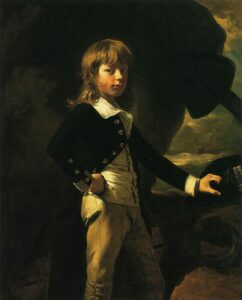british impressionism may not be as famous as its French counterpart, but it’s a rich, captivating art movement that has its own unique charm.
Stemming from the late 19th century, British Artists adopted the Impressionist focus on light and color to capture the very essence of the UK’s landscapes and daily life.
We’ll jump into how British Impressionists, though inspired by Monet and his peers, imbued their work with a distinctive British sensibility.
Stay with us as we explore the intriguing realm of British Impressionism, where each brushstroke tells a story of a time when art was on the cusp of modernity.
Background Of British Impressionism
Emerging in the late 19th century, British Impressionism was distinct yet intertwined with its French counterpart.
While French Impressionists were revolutionary in their approach to outdoor scenes, British artists adapted these techniques with a sensibility steeped in their rainy and misty environments.
Our exploration takes us through the cobblestone streets lined with gaslights and the rolling, dew-covered hills of the British countryside.
British Impressionists, like Walter Richard Sickert and Philip Wilson Steer, strived to encapsulate the fleeting moments much like Claude Monet and Edgar Degas.
Nonetheless, they inflected their canvases with a British touch.
In the verdant landscapes of Steer’s Walberswick, we’re not just seeing the light dance softly through the leaves, but we’re also feeling the unique British air as it blows inland from the North Sea.
As we jump deeper into this movement, it’s crucial to highlight that industrialization was sweeping across Britain.
This brought profound changes not just to society but also to British art.
The newly built railways and the smoky backdrop of the Industrial Revolution became subjects that our British Impressionists captured with both a sense of wonder and a critical eye.
- The somber scenes of London streets in Sickert’s works.
- The vibrant life of seaside towns as seen in Steer’s paintings.
These subjects mirrored the transformations happening in British society, portraying the stark contrasts between progress and the simpler pastoral life that was slowly fading away.
British Impressionism, hence, stands as a poignant chronicle of an era careening towards modernity amidst tempests of change.
Similarities With French Impressionism
While British Impressionism was infusing local character into its canvases, it retained core elements of the French Impressionist approach.
This was evident in the loose brushwork that aimed to capture the fleeting effects of light and atmosphere.
Both movements shared a fascination with natural light and its transformative effects on the landscape and urban scenes.
As proponents of Impressionism, artists in both Britain and France chose to step outside the confines of their studios to paint en plein air.
They believed in portraying life as it was, often focusing on leisure activities and changing seasons—themes that transcended geographical boundaries.
Monet’s Series on Westminster and Steer’s Girls Running both exemplify the movement’s engagement with the outdoors.
- Both utilized spontaneous, vibrant brushstrokes,
- Subject matter often included landscapes, and daily life scenes,
- Represented modern life with a tendency to avoid historical and mythological narratives.
The influence of French Impressionists like Claude Monet and Edgar Degas on their British counterparts cannot be understated.
Monet’s visits to London and his subsequent paintings of the city had a lasting impact on British artists.
In turn, they adapted these inspirations to their context, imbuing their works with an inherently British aesthetic while honoring the foundational principles of Impressionism.
Distinctive Features Of British Impressionism
As avid enthusiasts of the arts, we’ve come to recognize that British Impressionism possesses distinctive qualities that differentiate it from its French counterpart.
The use of light in British Impressionism, inspired by the frequently overcast skies of the UK, often conveys a softer, subtler luminosity.
This gentle diffusion of light became a hallmark, affecting how color and atmosphere were portrayed in their paintings.
British impressionists broke new ground by capturing the essence of Britain’s varied landscape and social conditions.

Similarly, The Thames below Westminster depicts the murky London fog through softened edges and a muted palette, illustrating the unique interaction between light and industrial cities.
- Influences from the French movement,
- Adaptations to British society and landscapes,
- Painting techniques tailored to British environments,
- The impact of British weather on color and light.
Artists of British Impressionism often gravitated towards:
- Nautical scenes,
- Rustic countryside imagery,
- Portrayals of social gatherings,
- Urban landscapes transformed by seasonal changes.
These painters also demonstrated a keen interest in the effects of modernization.
As film historians, we see parallels in how early British filmmakers incorporated these same sensibilities into their cinematic approach.

https://youtube.com/watch?v=aYLQVqOaRzk
Leading British Impressionist Artists
As we jump into the influential figures of British Impressionism, it’s important to remember that this movement was not a standalone wave but rather an adaptation of French Impressionism tailored to British sensibilities.
Walter Richard Sickert stands as a pivotal figure in the transition of Impressionism into the British art scene.
Sickert’s work often reflected the urban realism of London life, and his painting Ennui is emblematic of his introspective approach to capturing social interactions through muted tones and candid representations.
Philip Wilson Steer and Sir William Nicholson played significant roles in the promotion of British Impressionism through both their art and their mentorship of other artists.
Steer’s coastal scenes, such as Girls Running, Walberswick Pier, are notable for their dynamic use of light, whereas Nicholson’s still-lifes and landscapes maintain a distinction through bold brushwork.
These artists not only captured the essence of British society but also influenced an entire generation, nurturing the evolution of visual storytelling that would later transition seamlessly into the sphere of early British cinema.
British Impressionism was not an exclusively male Try; artists like Dorothea Sharp and Ethel Carrick added their unique perspectives to the movement.
Sharp’s vivid and colorful pieces like The Poultry Market depict everyday life with a brightness that belies the often somber British skies, while Carrick’s bustling scenes captured the vibrancy of markets and beachfronts with an effervescent charm.
The following list spotlights key British Impressionist artists whose work continues to resonate in the art community:

- Walter Richard Sickert: Captured urban realism with an introspective approach,
- Philip Wilson Steer: Noted for dynamic coastal scenes and his influence as a mentor,
- Sir William Nicholson: Recognized for bold brushwork in still-lifes and landscapes,
- Dorothea Sharp: Depicted everyday life with vivid, colorful compositions,
- Ethel Carrick: Painted bustling scenes full of vibrancy and charm.
Their contributions have left an indelible mark on the art world, and we see reflections of their techniques and approaches even in contemporary filmmaking, where mood, light, and color play crucial roles in narrative and visual storytelling.
Themes And Subjects In British Impressionism
At the heart of British Impressionism were the themes and subjects that captured the unique character of the British Isles.
We see a wide spectrum, from bustling London streets to serene landscapes, all depicted with a focus on light and atmosphere.
In Chelsea Reach, Sickert immortalized the foggy Thames, while Steer’s Girls Running, Walberswick Pier is a dance of sunlight on water.
The British Impressionists didn’t just paint scenes; they painted the very air that enveloped them.
- Urban life and leisure,
- The British coast and countryside,
- Portraits of society figures.
Our artists also turned inward, portraying everyday people engaged in ordinary activities.
In Nicholson’s The Sunny South, there is an intimate warmth as he captures his subject in repose against a dreamy, sun-soaked garden.
British Impressionism wasn’t confined to stillness; it depicted movement and the fleeting moments of everyday life.
Ethel Carrick’s market scenes are vibrant tableaus of color and bustle, as seen in French Market, Concarneau.
Among these varied scenes, one narrative stands out: the tension between change and the timeless.
British Impressionists documented the evolving societal landscape while honoring the enduring spirit of their homeland.
Legacy And Influence Of British Impressionism
The impacts of British Impressionism stretch far beyond the canvas and have significantly shaped various aspects of visual arts, especially in the realm of storytelling.
As art historians with a penchant for examining the cross-pollination of creativity, we can see the clear lines drawn from the techniques of Sickert and Steer to the cinematic language of British filmmakers.
The use of light and color to convey mood and atmosphere in films echoes the methods these artists implemented to depict the British way of life.
British Impressionism’s narrative power has been subtly woven into the fabric of modern visual storytelling.
Daybreak at Seaford by Walter Richard Sickert is an example of how everyday scenes were elevated to fine art, later inspiring various cinematic framings of daily British life.
This movement’s focus on daily activities and the nation’s land and seascapes has rooted in the broader culture, prompting future generations of artists to capture the essence of the moment, whether through a lens or on a screen.
- Influence in Cinematography: * Enhanced use of natural light * Visual storytelling through color tones * Emphasis on fleeting moments and daily life – Impact on Narrative Themes: * Portrayal of societal changes and tensions * Reflection on the timeless versus the transient * Introduction of ordinary characters as protagonists.
The indelible mark of British Impressionists manifests within the education and practices of contemporary artists as well.
Educational institutions have integrated the key tenets of British Impressionism into curricula, ensuring the longevity of its principles.
As we jump further into the nuances of this art movement, it’s clear that the ripple effects of British Impressionism continue to shape not only fine art but also present an influential backdrop to filmmaking aesthetics and narratives.
As a filmmaking site, we recognize that the legacies are not just hanging on gallery walls but are actively informing scenes, lighting, and character development in contemporary cinema, showing us that the power of an art movement can transcend its initial medium to inspire innovation across multiple forms of expression.
What Is British Impressionism Art – Wrap Up
We’ve seen how British Impressionism art encapsulates the spirit of an era, reflecting societal shifts and the beauty of the mundane.
Artists like Sickert, Steer, Nicholson, Sharp, and Carrick didn’t just paint scenes; they told stories that resonated with the essence of British life.
Their legacy lives on, influencing not just the art world but the broader realm of visual storytelling.
As we appreciate their contributions, it’s clear that the techniques and themes of British Impressionism continue to inspire and inform contemporary art and cinema, making it a movement that’s as relevant today as it was over a century ago.
Frequently Asked Questions
Who Are Some Key British Impressionist Artists?
British Impressionism featured artists such as Walter Richard Sickert, Philip Wilson Steer, Sir William Nicholson, Dorothea Sharp, and Ethel Carrick, who all played significant roles in the movement.
What Are The Main Differences Between British And French Impressionism?
British Impressionism adapted Impressionist techniques to depict the unique characteristics of British society and landscapes, diverging from French Impressionism’s focus on capturing the light and atmosphere of the moment.
How Did British Impressionism Influence Visual Storytelling?
British Impressionist artists influenced visual storytelling, particularly the transition into early British cinema, with their use of light, color, and the capture of fleeting moments, which later inspired mood and atmosphere in filmmaking.
What Themes Did British Impressionist Artists Explore?
They explored themes such as urban life and leisure, the British coast and countryside, portraits of society figures, and the everyday activities of ordinary people, reflecting the tension between societal changes and enduring traditions.
What Legacy Has British Impressionism Left On Contemporary Art And Education?
British Impressionism’s legacy persists in contemporary art and filmmaking with its principles integrated into educational curricula, inspiring use of light and color to convey mood, and influencing the depiction of societal narratives.


